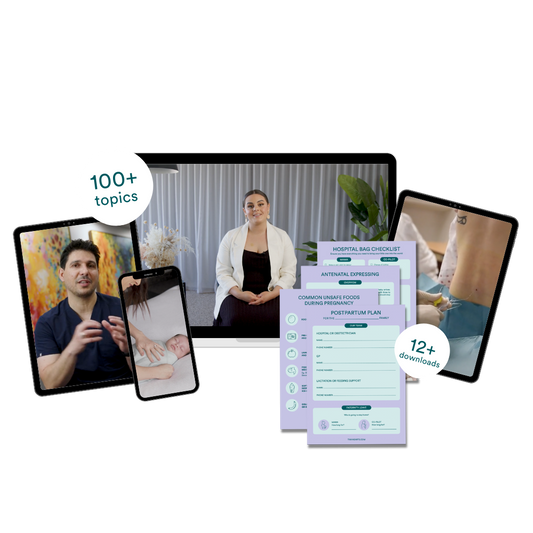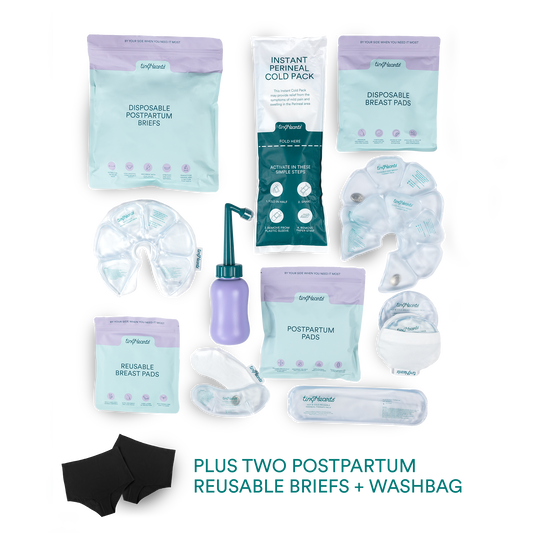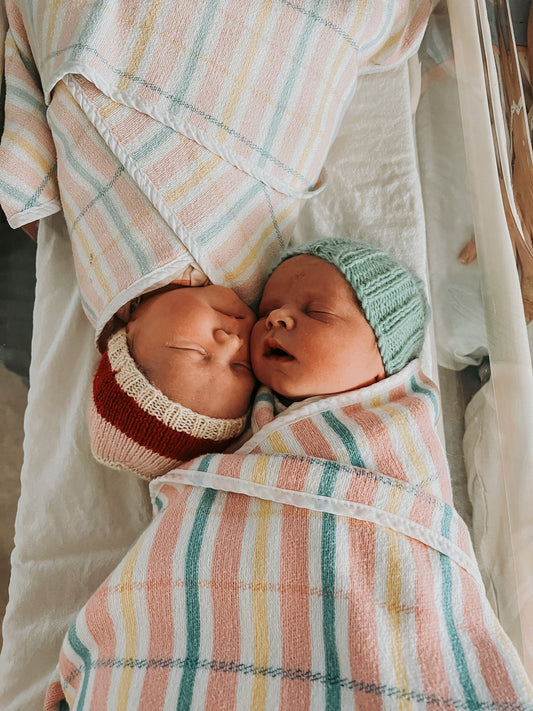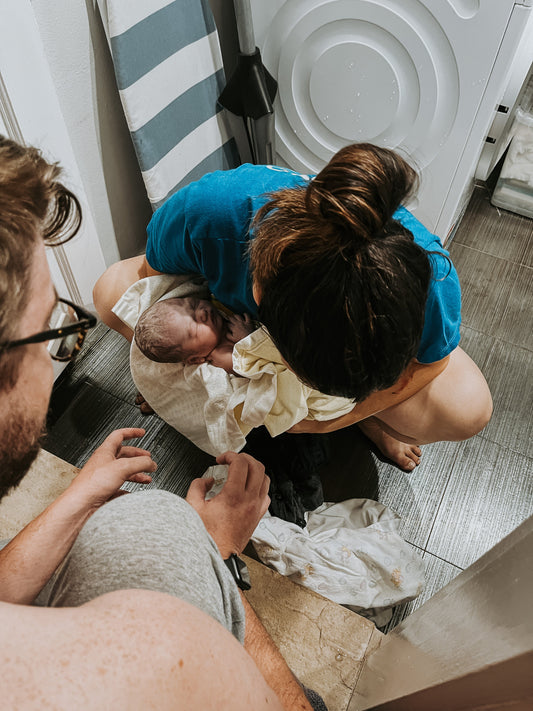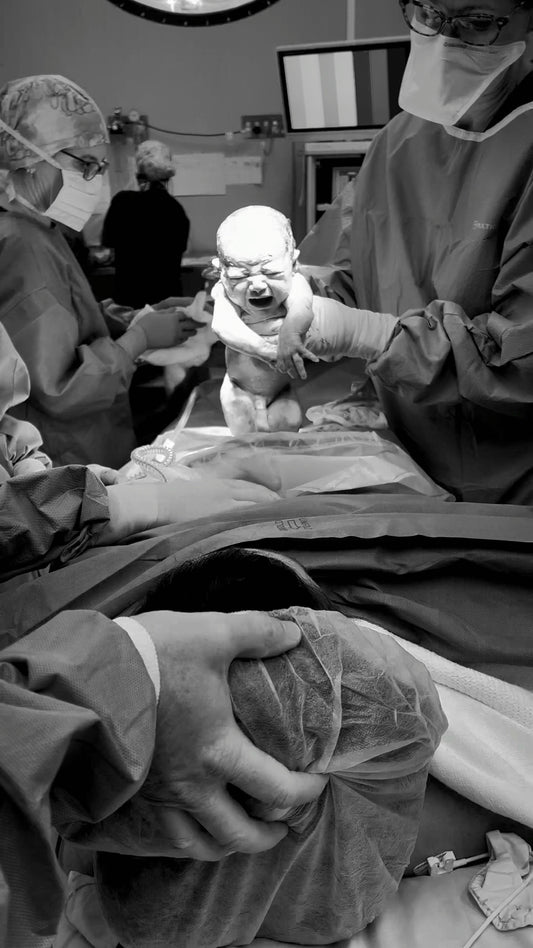
So you’ve made a little human - congratulations! You’re a rockstar.
If you’re anything like us, you’re either super excited about bringing bub home or scared out of your mind (let's be honest, you're probably both). Don’t stress! Taking your little one home for the first time is a major learning experience for all involved.
Sleep is crucial for your little one’s development, and many factors need to be considered such as safe sleeping, how often they need to sleep, how to know when they're tired and how to get sleep as a new parent.
Okay, we know what you’re thinking - that’s A LOT of information! But rest assure, we’ve got you.
To help all of you newbie parents out, we’ve come up with the ultimate Baby Sleep Bible to help you work out your bub’s sleep routine and needs in no time!
HOW MUCH SLEEP?
Your baby’s sleep requirements will change as they grow. So, to make it easy for you, we created a handy little guide that outlines how much sleep your child will need all the way up to age four.
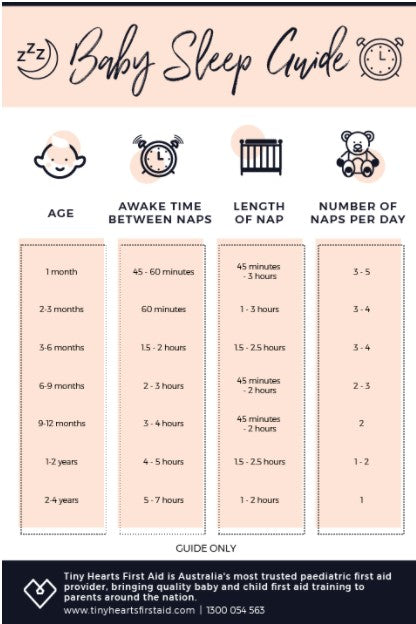
You can also download and print this guide here.
SAFE SLEEPING
One of the most important things to consider when bringing home your newborn is determining where your little one is going to sleep. Implementing sleep safety dramatically reduces the risk of Sudden Unexpected Death Syndrome (SUDS), so it’s essential to know all the safety tips to help give your bub the best environment for them to rest their little eyes.
Room Sharing
In the early stages, the safest place for your bub to sleep is in the same room as their parent or parents. For the first six to twelve months, it’s highly recommended for your baby to sleep in the same room in their own safe sleeping place such as a bassinet or safety cot.
Why Room Sharing?
Red Nose Australia says the safest place for a baby to sleep is in a safe cot next to the adult caregivers’ bed.
“Studies have shown when a committed caregiver sleeps in the same room, but not the same bed with their baby, the chance of the baby dying suddenly and unexpectedly is reduced by up to 50%”.
Room sharing will also mean you have easy access to your bub in the middle of the night. This is especially important for breastfeeding Mamas!
Room Preparation
Before your little one arrives, you should make room in your current bedroom for your bub to fit or move a mattress into your child’s nursery for you to sleep on. This may require some furniture rearranging, so it’s important to do this ahead of time!
If Mum is breastfeeding, we strongly recommend having the bassinet or cot set up next to their side of the bed.
Preparing the Bassinet
It’s important that your bub’s bassinet or safety cot is set up to ensure that your child has the safest sleeping environment possible. The following steps below outline how your child’s bassinet or cot should be set up to provide a safe sleeping environment:
- Ensure your child’s head, and face remains uncovered during sleep.
- Ensure you have a firm, well-fitted mattress with a tight sheet covering. There should be no gaps between the mattress and cot.
- Set the bassinet or cot up on a flat surface and check to see if the cot is level.
- Position your child with their feet to the end of the bed.
- If you have any blankets, firmly tuck these no higher than their chest. No doonas or quilts should be placed in the bassinet or cot.
- If your bub is swaddled, ensure the swaddle is no higher than their shoulder and is firm (but not tight). Light cotton fabric is best recommended to avoid over-heating. Please be aware of your bub’s development when it comes to swaddling. It’s recommended to stop swaddling at around four months or when they begin rolling.
- Do not place hats on your child when they sleep.
- Do not place pillows in the bassinet or cot.
- Do not place any toys, stuffed animals or small objects in the bassinet or cot with your little one.
The same above steps apply when preparing your child’s cot in their own room or nursery.

Transitioning to the Nursery
There is no set time frame in which your bub is required to move out of your room and into their nursery. As a general rule, babies can start to make this transition between six and twelve months of age - keep in mind, every baby will be different!
To help streamline this process and to give you peace of mind that you’re bub is safe, there are a few steps you can follow to help ease this transitional period.
Familiarise Your Bub with their New Surroundings
For some babies, they move from bassinet to cot with ease while others will take some time adjusting. The best way to introduce your child to their new sleeping environment is during daytime naps - this will allow them to slowly adjust without making the transition immediate.
When your little one is awake and alert, place them in the cot and play with them or sit nearby while they play by themselves. This will allow them to associate the cot with positive and happy feelings. Remember to take any toys or objects out before they go to sleep.
Once your bub is familiar and comfortable with their nursery and new sleeping environment, you can make the transition permanent!
Purchase a Baby Monitor
A baby monitor, especially a video one, is the perfect way to get peace of mind during the night. There are plenty of options on the market that have high-quality footage and sound and some can even connect to your phone.
You can position this monitor above your child’s bed (make sure this is entirely out of reach). This way, you will know if your child requires your attention in the middle of the night.
Create a Routine
Once your bub is sleeping in their own nursery, it’s a great idea to develop a bedtime routine, so your little one begins to understand when it’s bedtime. Every baby’s routine will be different, but it may look something like this:
1. Give your bub a feed or bath (could be even both)
2. Dim the lights in the room
3. Rub your baby with some baby-safe soothing lotion
4. Pop a fresh nappy on
5. Put them in clean clothing

HOW DO I KNOW WHEN IT’S TIME FOR BED?
As you get to know your baby, you will be able to pick up when they’re hungry, grumpy, sick and tired. In the early stages, you may not fully understand what a tired cue may look like. Here are some of the most common tired signs:
- Yawning (obviously)
- If they grizzle or cry
- Jerking arms or legs
- Closing fists
- Fluttering eyelids and frowning
- Arching their back (in older babies)
- Staring or difficulty focussing (they may appear cross-eyed)
- Stiffness
- Sucking on fingers
- Rubbing their eyes (in older babies)
- Grasping at their own body or clothes
LOOKING AFTER YOURSELF
While it’s vital to ensure your bub is getting adequate amounts of safe sleep, it’s just as important to look after yourself as well! Yes, it’s normal to be a little tired, and you will be in the early days. It’s a significant adjustment to your daily routine - but your little one will need your best self to care for them.
Here are few self-care tips to keep yourself in tip-top shape:
- It’s the old saying: sleep when the baby sleeps. But seriously, catch up on rest whenever you can! Your newborn will take multiple naps during the day, try to do so as well if needed.
- Go to bed early. Your little one has their longest sleep when they are first put to bed so try to sleep then as well.
- Limit your caffeine to help promote better sleep.
- Drink plenty of fluids and eat well-balanced meals.
- Keep active for a positive mental and physical state of mind.
- Ask for help if you need it!

Feeling overwhelmed? We’d be surprised if you weren’t! Becoming a new parent is a huge deal and the biggest learning experience of your life.
It’s important to remember that all of these steps, routines and precautions are a small chapter in a long and healthy life for your baby. As parents, you will do anything to keep your bub safe and healthy, and these sleeping tips will soon become second nature to you.
You got this!

